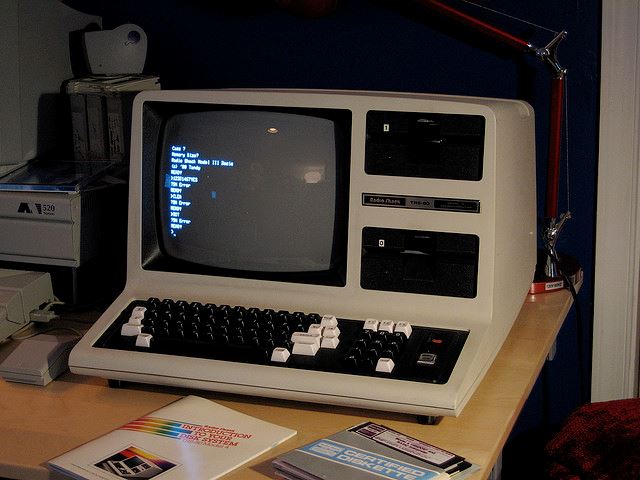Behind the Scenes with Gary Kildall: The Unsung Hero of Operating Systems

When we think about the pioneers of personal computing, names like Bill Gates and Steve Jobs often come to mind. However, behind the scenes of this revolution was another brilliant mind whose contributions were just as pivotal, yet largely uncelebrated. Gary Kildall, a computer scientist and microcomputer entrepreneur, played a critical role in shaping the world of operating systems during the early days of personal computing.
Gary Kildall’s journey in the realm of computing began with his work on CP/M (Control Program for Microcomputers), an operating system that became a standard for microcomputers in the late 1970s and early 1980s. While CP/M may not be a household name today, it was the foundation upon which many early software applications were built. The versatility and efficiency of CP/M made it a favorite among developers and businesses during its prime.
Despite his significant contributions, Kildall’s name often gets overshadowed by more commercially successful contemporaries. Yet, his innovations laid the groundwork for many advancements in computer technology. Understanding Kildall's impact requires delving into his inventions, career milestones, and the legacy he left behind in the world of operating systems.
Early Life and Education
Gary Kildall was born on May 19, 1942, in Seattle, Washington. He showed an early interest in mathematics and science, which led him to pursue a degree in mathematics at the University of Washington. His academic journey continued at the University of Washington's Computer Science department, where he earned his Ph.D.
During his time as an instructor at the Naval Postgraduate School in Monterey, California, Kildall began experimenting with microcomputers. His passion for computing led him to develop a system that allowed microcomputers to run software independently of their hardware configurations. This innovation would later become known as CP/M.
The Birth of CP/M
CP/M was created in the mid-1970s when Kildall recognized a need for a standard operating system that could work across different types of hardware. At a time when each computer had its own unique OS, CP/M offered a universal solution that could bridge various hardware platforms. This flexibility was groundbreaking and helped establish microcomputers as versatile tools for business and personal use.
Kildall founded Digital Research Inc. (DRI) to commercialize CP/M. The operating system quickly gained popularity among software developers because it allowed them to write programs that could run on multiple machines without modification. As a result, CP/M became widely adopted by businesses and hobbyists alike.
Competition with Microsoft
Despite its success, CP/M faced stiff competition from emerging players like Microsoft. The story of how MS-DOS came to dominate over CP/M is often recounted with a mixture of fact and legend. According to various sources, IBM initially approached Digital Research to license CP/M for their new personal computer but ended up partnering with Microsoft instead (source: Britannica).
The reasons for this shift vary, but one popular account suggests that Kildall was unavailable during IBM's visit, leading to missed opportunities. Microsoft seized this chance by offering IBM an alternative OS—MS-DOS—based on QDOS (Quick and Dirty Operating System), which had similarities to CP/M. The rest is history: MS-DOS became the standard operating system for IBM PCs and eventually dominated the market.
Kildall’s Later Work and Legacy
After CP/M's decline in market share, Gary Kildall continued to innovate within the tech industry. He developed several other technologies, including GEM (Graphical Environment Manager), an early graphical user interface that predated Windows. Additionally, he worked on various projects related to networking and multimedia.
Though he never achieved the same level of commercial success as some of his contemporaries, Kildall remained passionate about technology until his untimely death in 1994. His contributions to computing have been recognized posthumously by various institutions and industry experts who understand the depth of his impact.
Acknowledging an Unsung Hero
The story of Gary Kildall is a reminder that technological advancements are often built on the shoulders of many innovators. While not all receive widespread recognition during their lifetimes, their work remains essential to progress. Kildall’s development of CP/M paved the way for future operating systems and set standards that are still relevant today.
As we reflect on Gary Kildall's legacy, it's important to acknowledge his role in shaping the landscape of personal computing. His vision and creativity provided solutions that addressed real-world problems and opened doors for future innovations.
The Lasting Impact of Gary Kildall
In conclusion, Gary Kildall’s contributions to the field of operating systems cannot be overstated. His pioneering work with CP/M provided a foundation upon which modern computing was built. Despite facing significant competition from giants like Microsoft, Kildall's innovations continue to influence today's technology landscape.
By recognizing and celebrating figures like Gary Kildall, we gain a more comprehensive understanding of how our current digital world came to be. His story is a testament to the importance of innovation, perseverance, and the often-overlooked heroes behind major technological advancements.